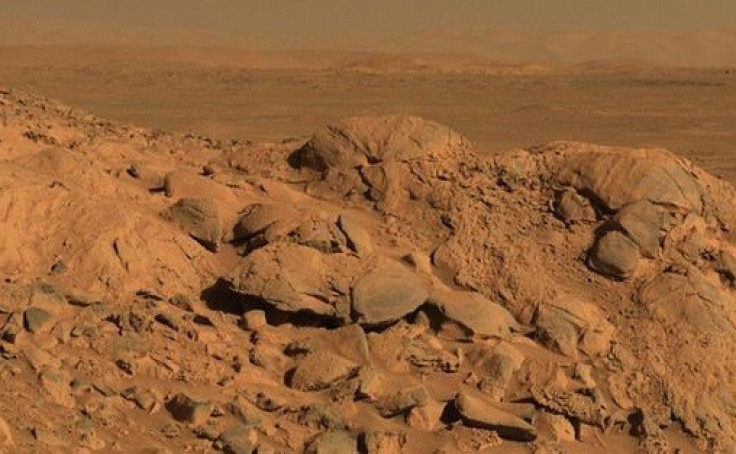Mars Atmosphere Rich in Oxygen 4,000 Million Years Ago
Mars had oxygen-rich atmosphere 1,500 million years before Earth, say Oxford scientists

Mars had an oxygen-rich atmosphere around 4,000 million years ago - 1,500 million years before Earth's atmosphere was breathable.
Rocks in Mars' Gusev crater collected by Nasa's Spirit rover have been examined by scientists from Oxford University who say the geological composition suggests that the rocks were formed when there was oxygen on the planet.
The team studied Martian meteorites that had crashed on Earth and surface rocks from the red planet - the latter, they found, were five times richer in nickel than the meteorites, according to a report ikn the journal Nature.
This raised questions as to whether the meteorites found on Earth were typical of volcanic matter from Mars.
The theory they came up with was that the surface rocks were subject to a process called subduction, where surface material is recycled into the interior.
Research leader Bernard Wood said: "What we have shown is that both meteorites and surface volcanic rocks are consistent with similar origins in the deep interior of Mars but that the surface rocks come from a more oxygen-rich environment, probably caused by recycling of oxygen-rich materials into the interior.
Volcanic eruptions
"This result is surprising because while the meteorites are geologically young - around 180 million to 1,400 million years old - the Spirit rover was analysing a very old part of Mars, more than 3,700 million years old."
The team thinks the surface of Mars was oxygen-rich early on in the planet's history and that subduction drew geological material into the interior and pushed it back to the surface through eruptions 4,000 million years ago.
In comparison, the meteorites came from deeper within Mars so were less affected by the process of subduction.
The rocks could have started out as being of similar composition but their properties changed.
Wood said: "The implication is that Mars had an oxygen-rich atmosphere about 4,000 million years ago, well before the rise of atmospheric oxygen on earth around 2,500 million years ago.
"As oxidation is what gives Mars its distinctive colour it is likely that the 'red planet' was wet, warm and rusty billions of years before Earth's atmosphere became oxygen-rich."
© Copyright IBTimes 2024. All rights reserved.






